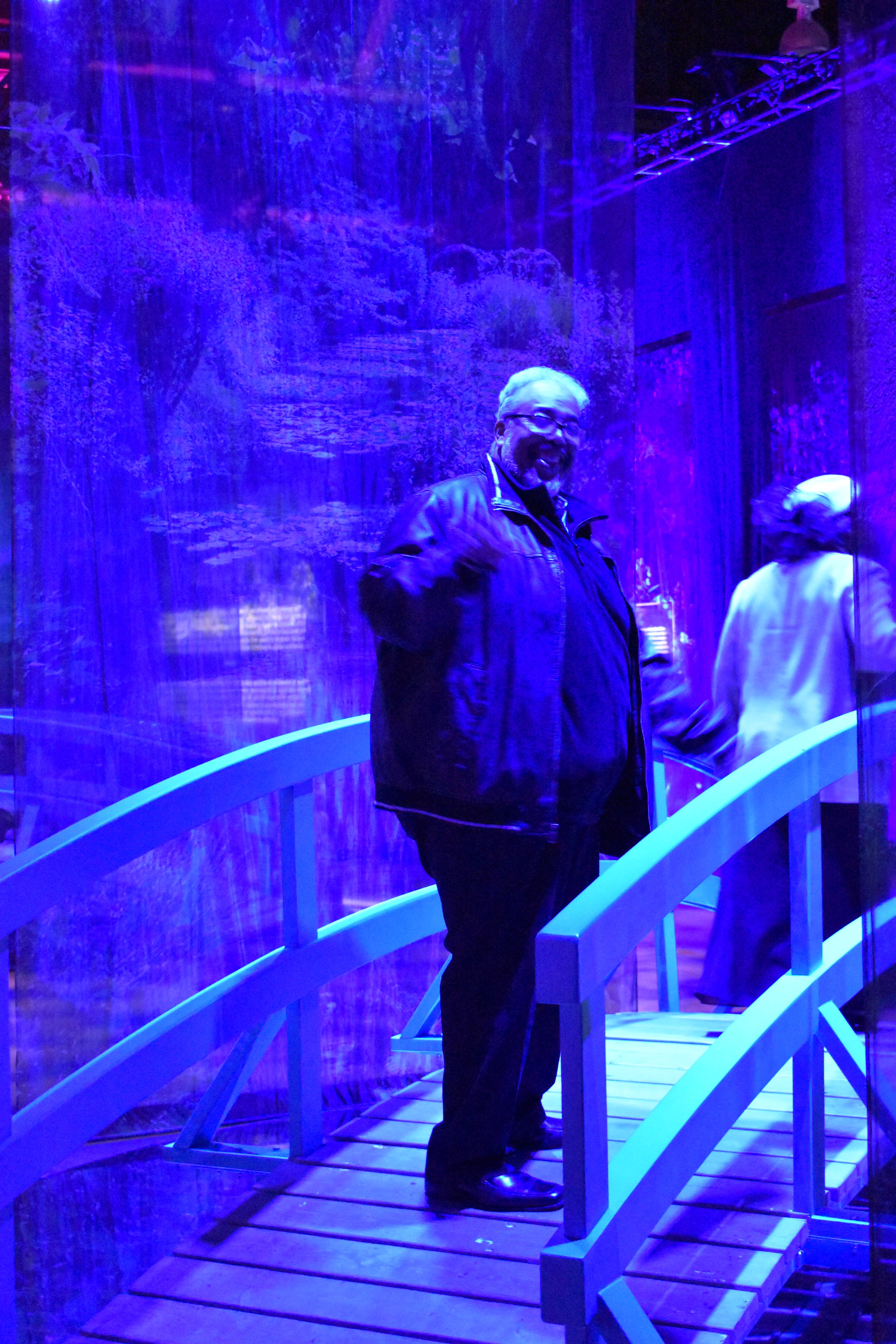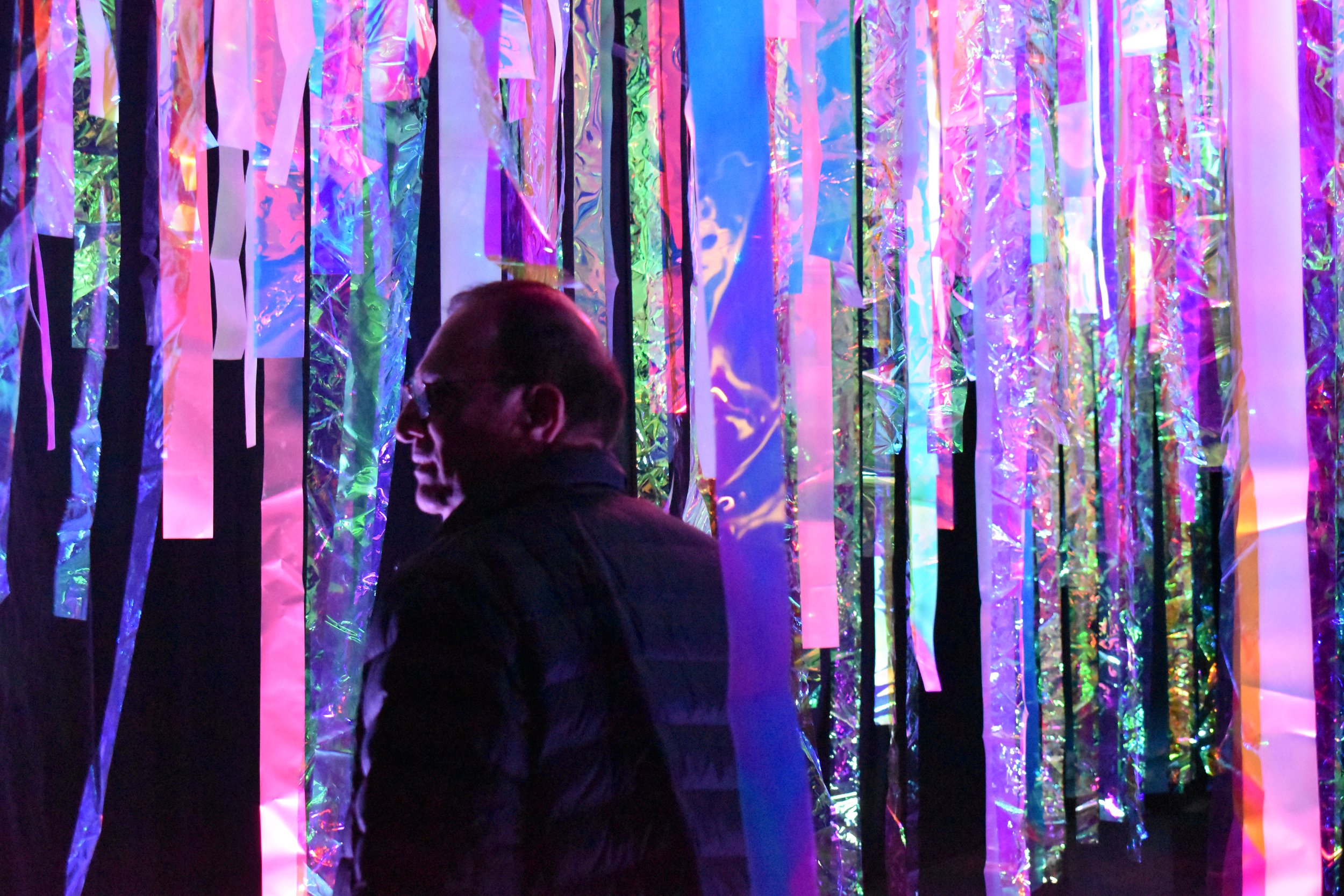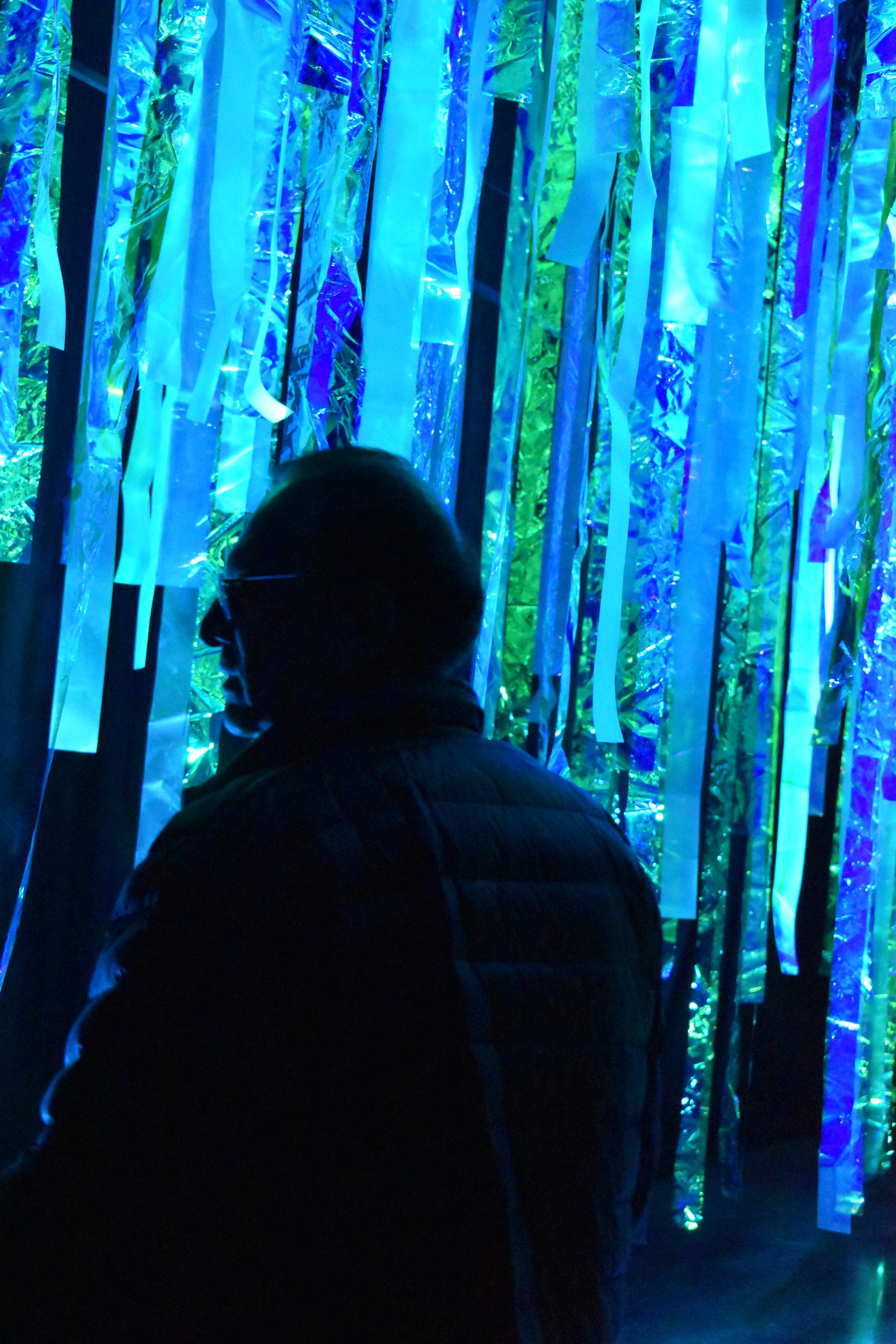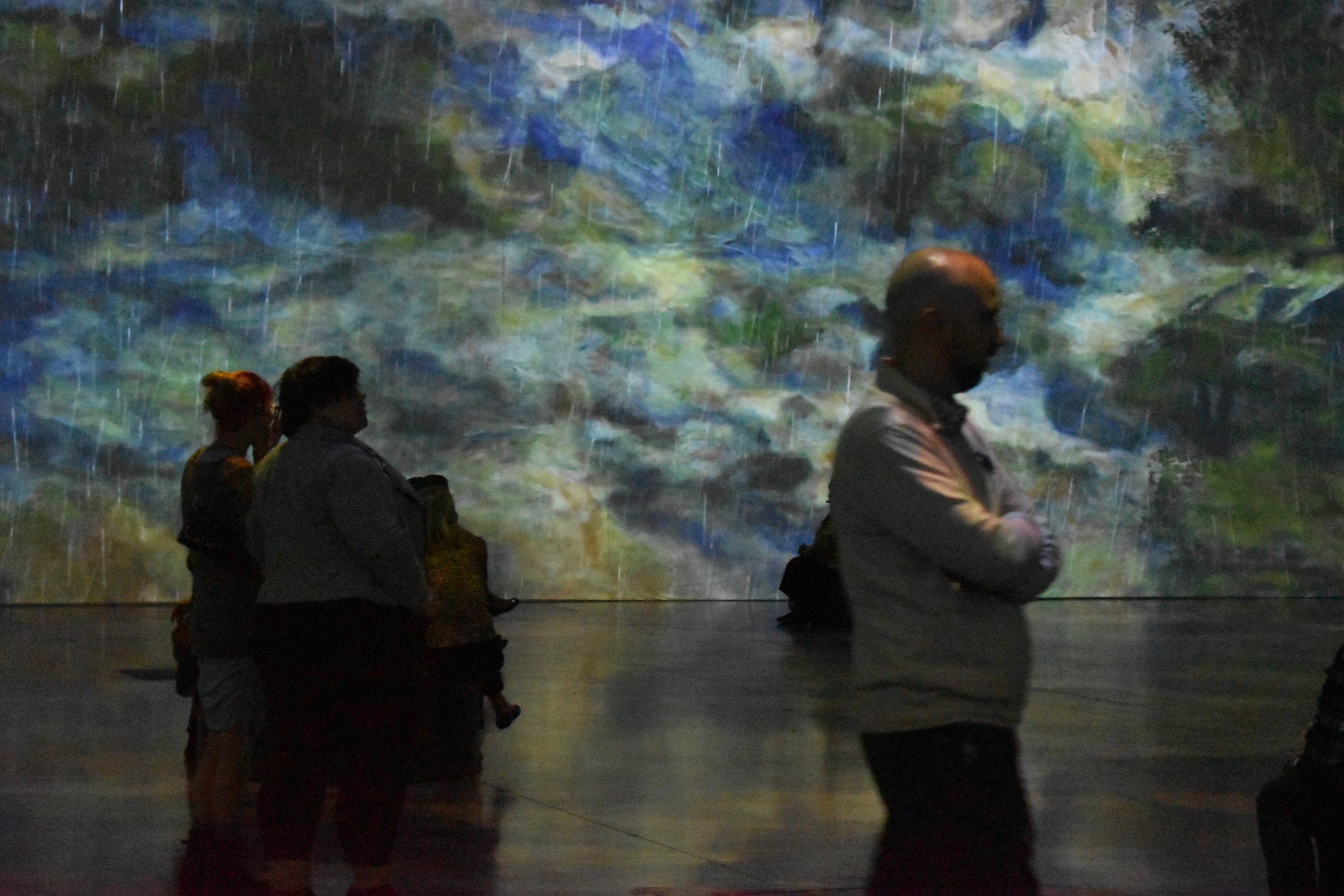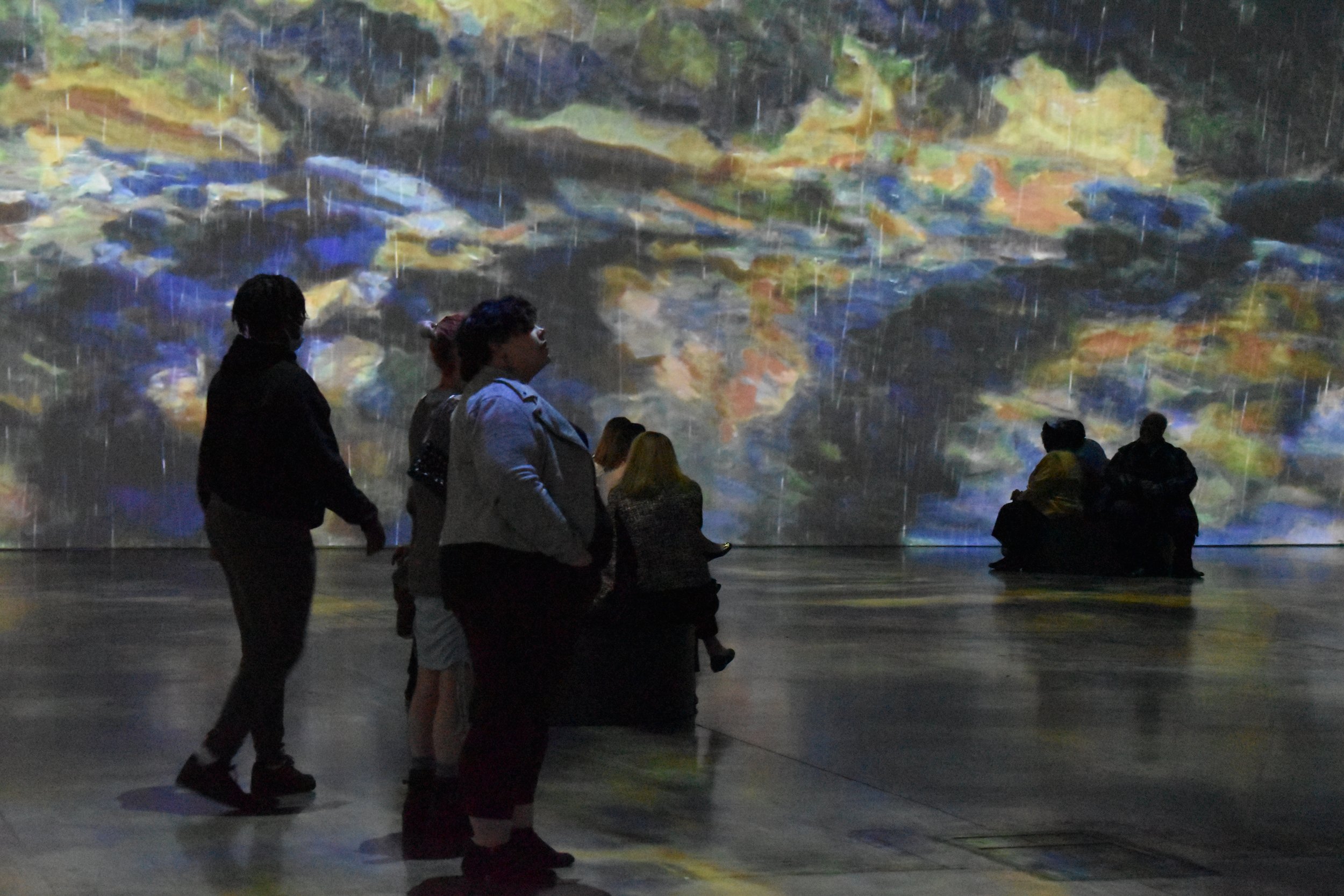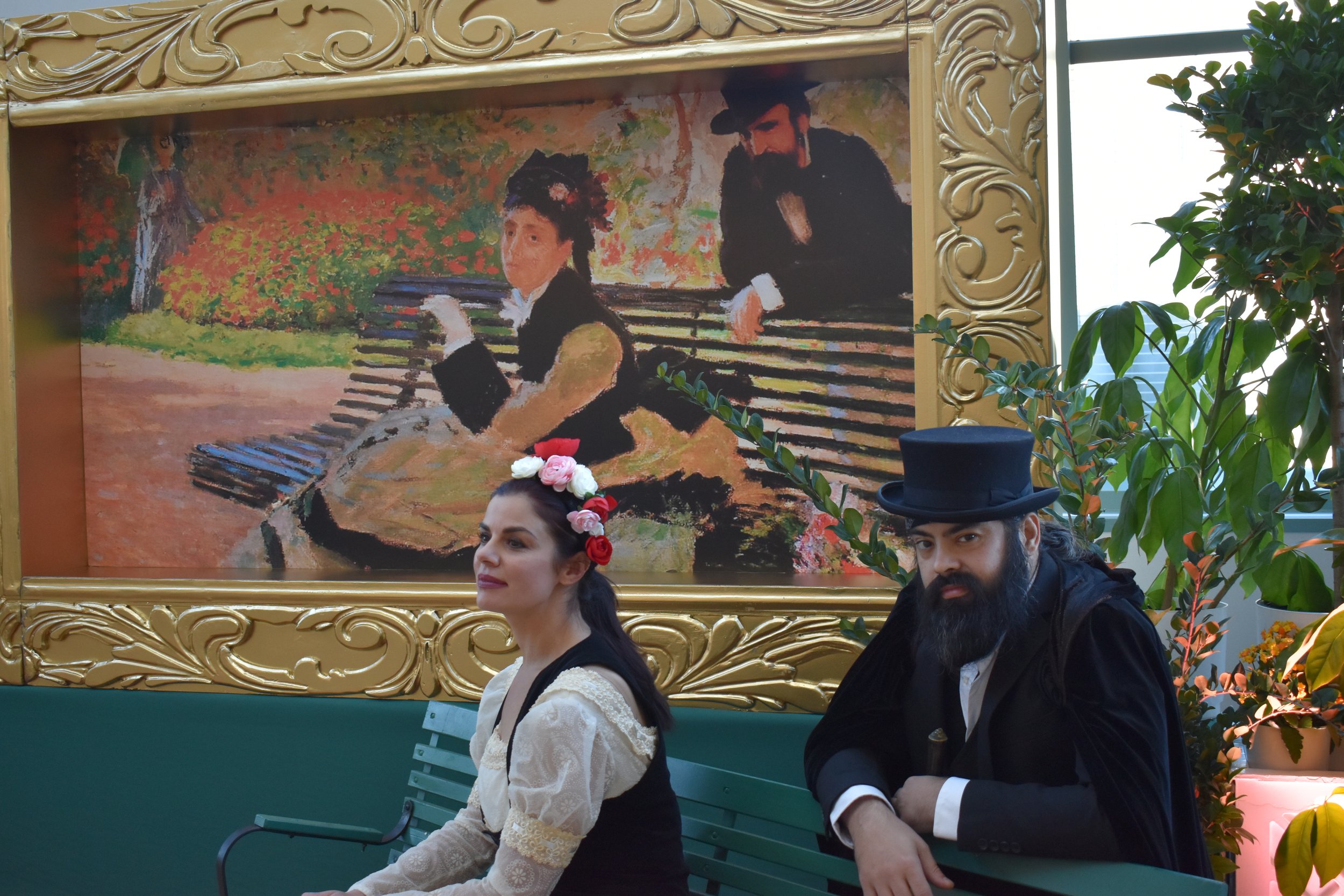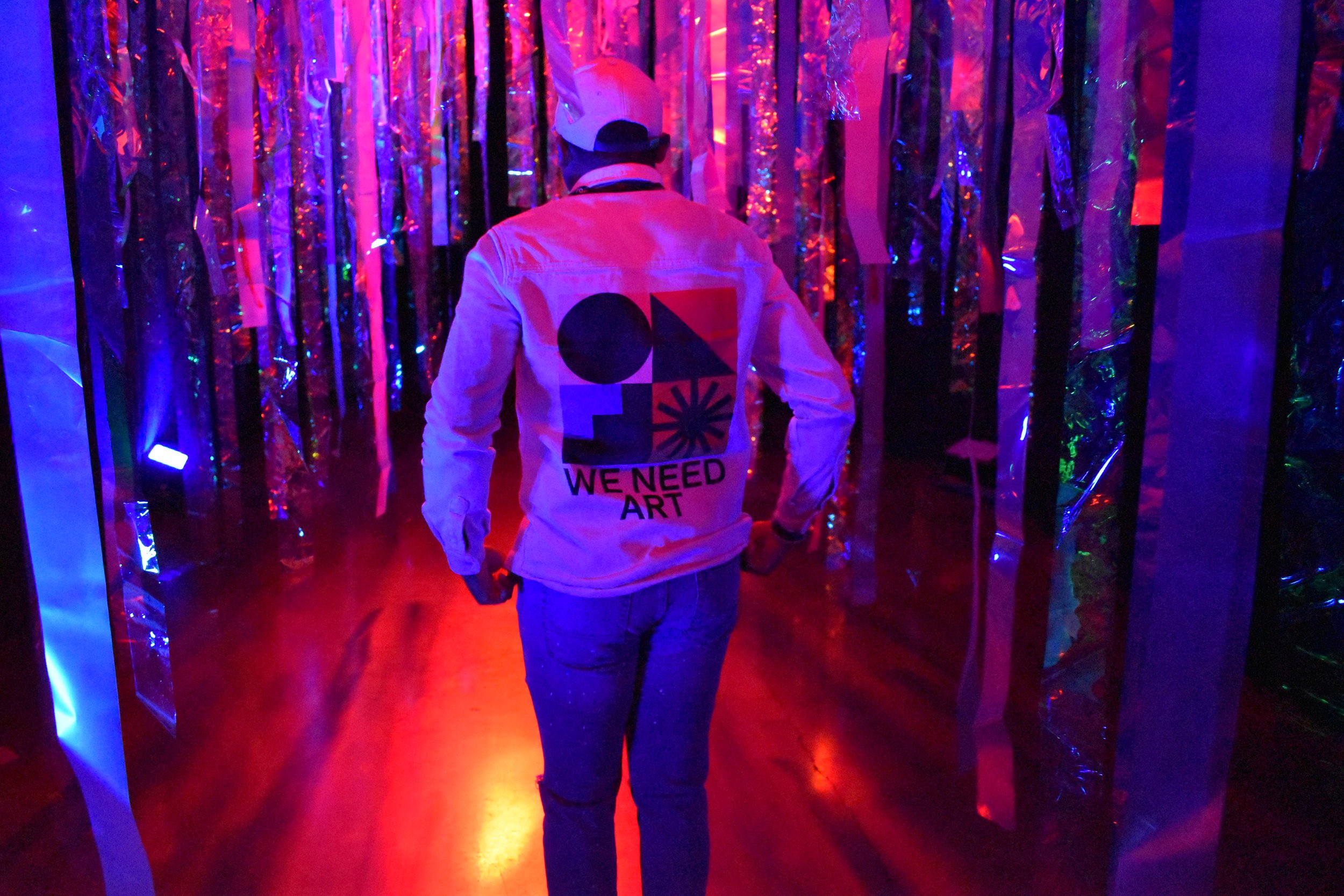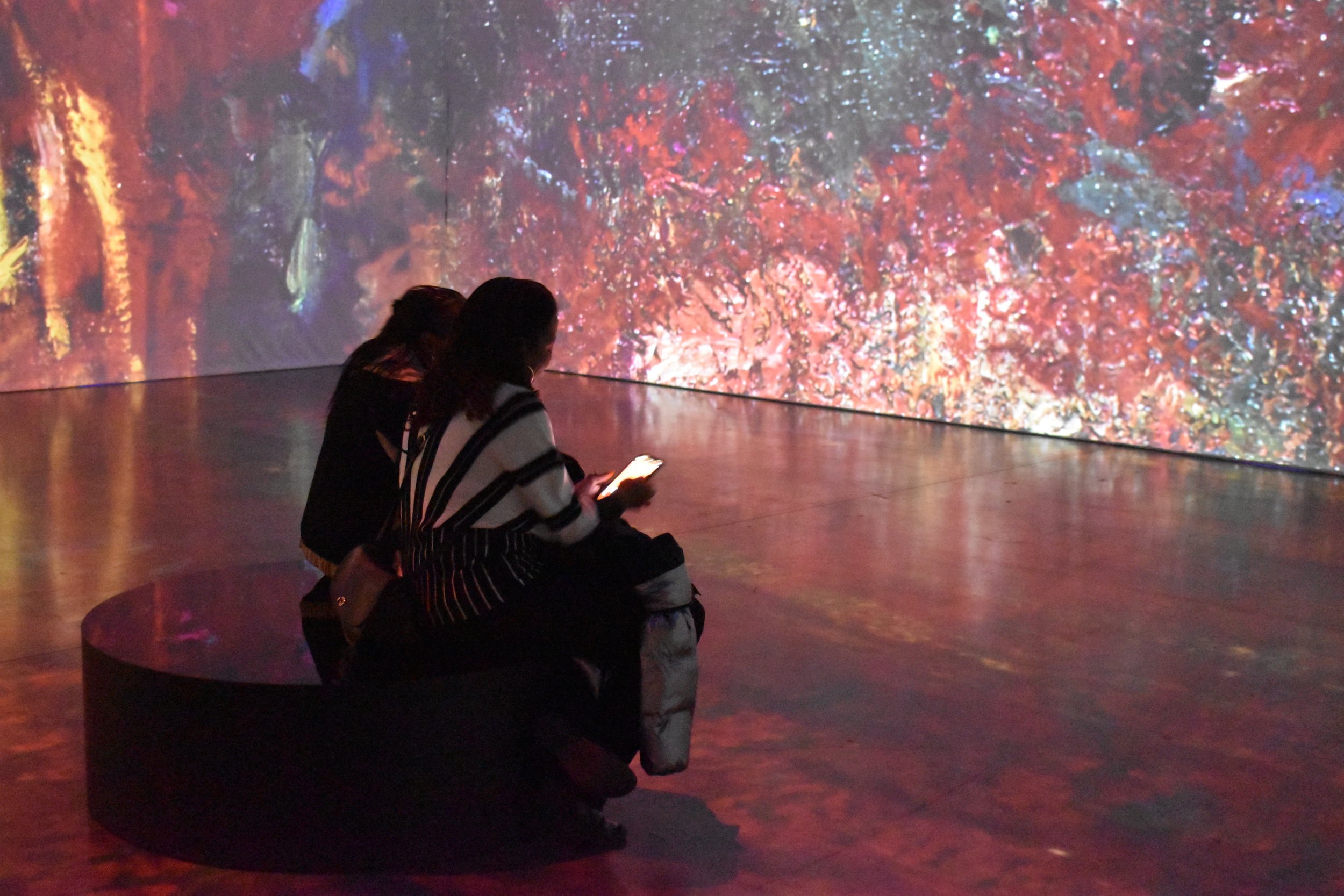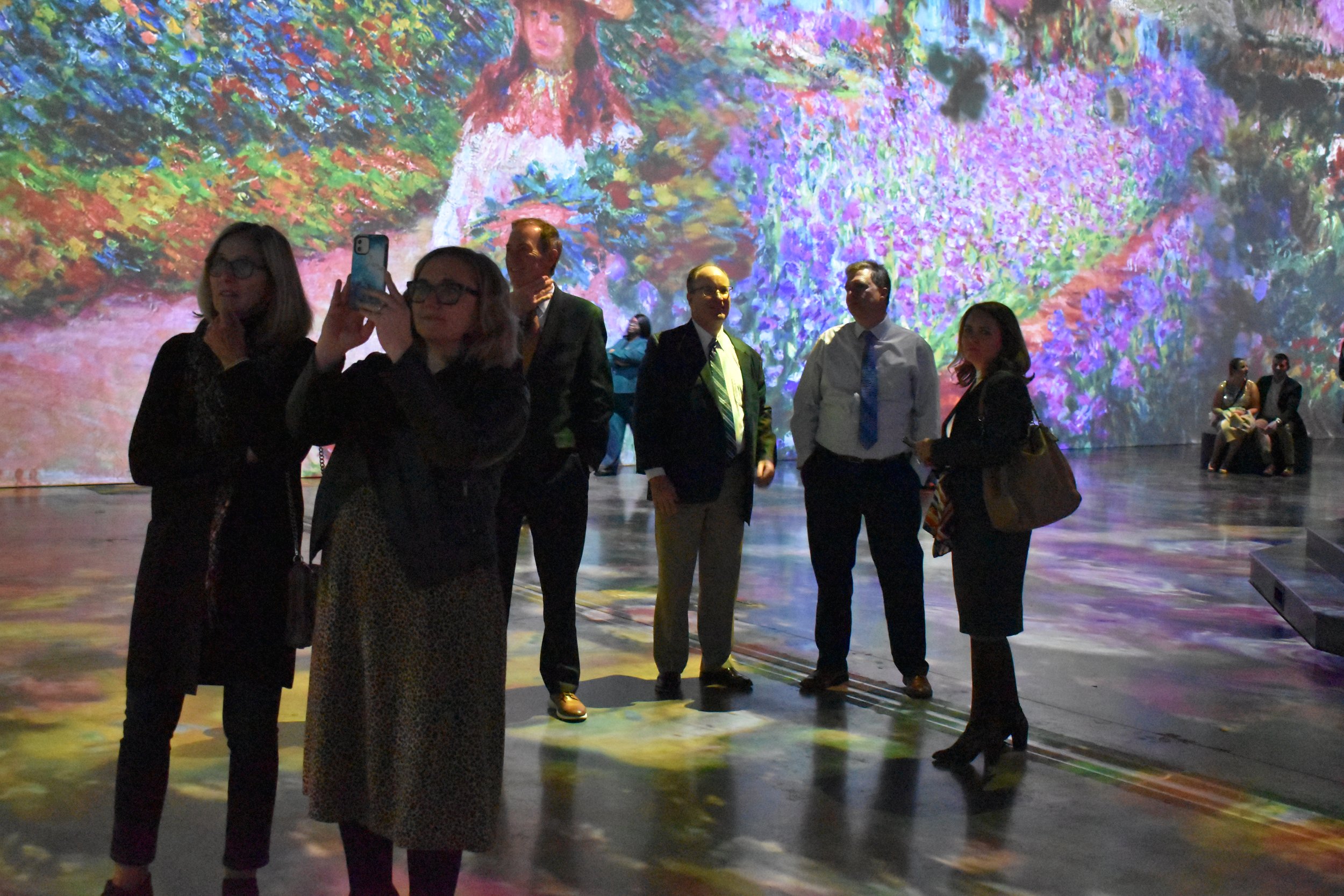Nestled within the Wisconsin Center, there is a magical space created to bring new life and perspective to the great Impressionist leader, Claude Monet. Best known for his Water Lily paintings, Monet was a pioneer of the Impressionistic style of painting in the late 19th and early 20th centuries. While his Water Lily pieces were many in number, and often seen as light and peaceful, he also created many works that were dark and full of intensity. In the modern experience Beyond Monet presents, fans both young and old are able to take in a large breadth of his work at once.
The exhibition starts by building excitement and anticipation in an elaborately decorated framed opening that leads the view to a large dim room. In this room is where viewers will be able to wander through the large fabric prints of his work, lit beautifully to match the emotion filled works and set the tone for the rest of the experience. On these larger than life fabric prints, viewers not so familiar with his history can learn more about his life, inspirations and collections. These were especially interesting for me, as someone with only a limited knowledge of Monet. In the biographical notations, his expansive home garden is noted, where he diverted streams to create his own garden pond and iconic water bridge; found in many of his paintings over the years. The Beyond Monet experience pays homage to these bridges in the first room of the exhibition.
“The temptation came to me to use this water lily theme for the decoration of a drawing room; carried along the length of the walls, enveloping the entire interior with its unity, it would produce the illusion of an endless whole, of water with no horizon and no shore; nerves exhausted by work would relax there, following the restful example of those still waters, and, to whoever entered it, the room would provide a refuge of peaceful meditation in the middle of a flowering aquarium.” -Monet
As you get to the far end of the first exhibition room, you’ll find this quote from the artist that perfectly welcomes you to the rest of the show. The path to the second exhibition room is quite a magical surprise, sure to make you smile in wonder and delight. As you enter the second exhibition room, you are immediately engulfed in color and sound. Using 360 degree projector technology creates visuals in all directions.
The room is sparsely decorated except for some low benches and a large gazebo structure centering the room and providing more seating as well as a raised vantage point. This was a favorite addition to the space that perfectly fit into Monet’s world. It reminded me of all the many spring, summer, and fall days spent with loved ones at local parks and backyard gatherings.
As the paintings flow together and morph into one another, you hear subtle music and sounds that fit the content of the paintings so well - it really makes you feel as if you are part of the scene itself. The sounds ranged from people chatting in low tones and laughing, to more urban with sounds of a marina and ships complementing these paintings Monet is also well known for. The auditory transitions were just as seamless as the visuals, ranging from calm and tranquil moments, to ones of intensity and darkness; very fitting for Monet’s life and experiences with mental health.
It’s a well known fact that Monet was not immediately accepted into the world of fine art. At first, he was criticized in the industry for works that seemed incomplete. I really enjoyed seeing actual quotes of his critics in the show, for me it brought a level of complexity and interest to the show - accurate of the kinds of struggle many artists go through in their career as innovators.
As Monet was in his time, the artists involved in creating this experience are also innovators - creating a multi-sensory, emotive retelling of Monet that resonates with the digital age we now live in. In its entirety, Beyond Monet is a great show - perfect for all ages. The exhibition honors the life of Claude Monet, leader of an artistic movement and style never to be forgotten.
